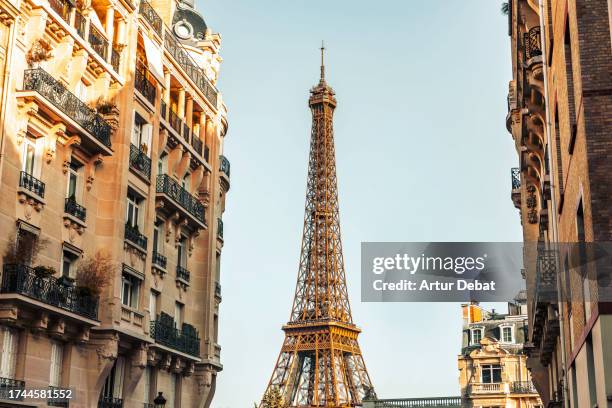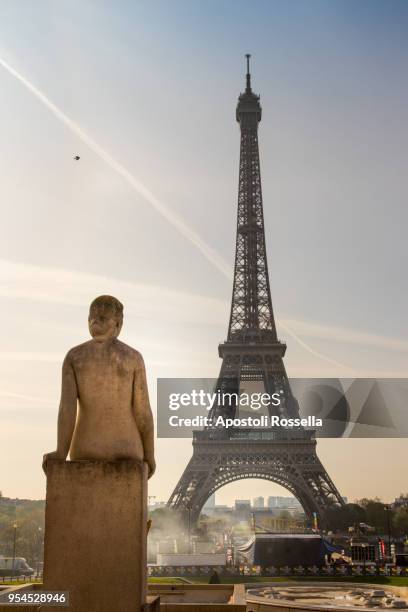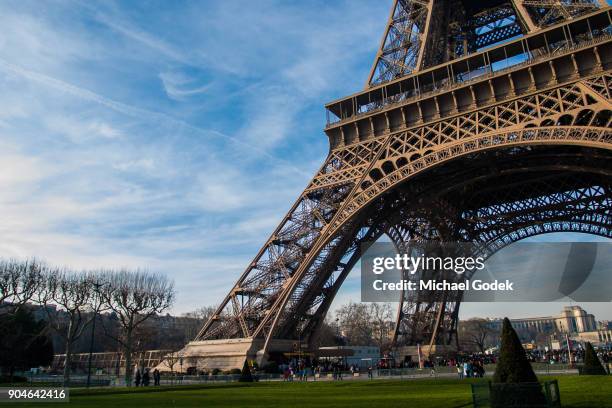What Is The Eiffel Tower Position? Understanding Its Slang And Cultural Impact
The Eiffel Tower, a truly monumental structure, proudly stands as a vibrant symbol of Paris, known, you know, for its stunning architectural design and romantic charm. For many, it's a place of history and truly breathtaking views. Yet, rather curiously, some people wonder about a seemingly unrelated term that shares its famous name. It's a bit of a linguistic twist, so to speak, where an iconic landmark suddenly takes on a completely different meaning in everyday conversation.
This article will help you sort out what "eiffel tower position" means, especially when people use it in casual chat or when it pops up in entertainment. It's a term that, in some respects, has a surprising definition far removed from the actual grand structure in France. We'll look at how language can shift and take on new, sometimes quite unexpected, forms.
We're going to learn what "eiffel tower" actually means in slang and how folks use it in various situations. This discussion will also touch on its appearance in pop culture, which, honestly, has sparked quite a bit of talk recently. You'll get a clearer picture of this term's surprising journey from a famous monument to a phrase with a very different kind of cultural buzz.
Table of Contents
- The Iconic Eiffel Tower Versus Its Unexpected Slang Meaning
- Defining the Eiffel Tower Position: A Closer Look at the Slang
- The Eiffel Tower Position in Pop Culture: A Recent Spotlight
- Language in Motion: How Slang Evolves
- Addressing Common Questions About the Eiffel Tower Position
The Iconic Eiffel Tower Versus Its Unexpected Slang Meaning
The actual Eiffel Tower, a creation of the engineer Gustave Eiffel and his company, which built it from 1887 to 1889, truly stands as a testament to human ingenuity. It’s a global symbol, quite literally, of architectural brilliance and a very popular destination for travelers from all corners of the globe. People often think of romance and history when they hear its name, and for good reason, too it's almost a universal symbol of love and beauty.
However, as language tends to do, a word or phrase can sometimes take on a completely different life in informal settings. This is where the term "eiffel tower position" enters a whole other conversation, one that has absolutely nothing to do with sightseeing or French history. It's a rather stark contrast, actually, between a world-renowned monument and a very specific piece of modern slang.
This shift in meaning highlights how language, in a way, is always changing, always adapting. Words pick up new layers, especially as they get used in different communities and through various forms of media. So, while many admire the real Eiffel Tower for its historical importance and the amazing views it offers, others, quite curiously, ponder this seemingly unrelated term that has popped up in casual talk.
- Dylan Obrien
- Dubai Porto Party
- Emily Knight
- Doris Sherman Williams
- Emmanuel Macron Birthdate Brigitte Macron Birthdate
Defining the Eiffel Tower Position: A Closer Look at the Slang
To put it plainly, the term "eiffel tower" in slang refers to a sexual act involving three people. It is, to be honest, a rather vulgar term. The general idea behind it involves a central person with two other individuals engaging with them in specific ways. This kind of group activity is, basically, what the slang term points to.
Neal, a person quoted in the provided text, says that the "famous eiffel tower position is the most popular for achieving both penetration and head at the same time." This particular phrasing suggests a focus on simultaneous acts within the group dynamic. It's interesting how specific slang can become about certain actions, isn't it?
Different Descriptions of the Position
The descriptions of the "eiffel tower position" vary slightly but maintain a consistent core. One common way to describe it is with a woman in the middle, having a man engage in anal sex while another man performs oral sex on her. This setup is one specific way the term is understood and, in a way, paints a very clear picture of the scenario.
Another description states that in this scenario, one man engages in intercourse from behind, which could be either vaginal or anal, while the woman performs oral sex on the other man. This variation, like, still involves three people and a similar arrangement of acts. It's a bit like different angles on the same basic idea, you know?
The term "eiffel towering" is also mentioned, referring to a sexual position where two men stand on either side of a woman, who is positioned on her hands and knees. This particular phrasing emphasizes the standing aspect of the men, perhaps, in some respects, giving it the "towering" feel. It's pretty descriptive, to be fair.
Furthermore, the "eiffel tower sex position" can involve three or more people where one person is either on all fours or lying on their back. In this setup, two other partners are positioned in front and behind that person. This broader definition suggests that, basically, the core idea is about being surrounded or engaged from multiple sides.
Some descriptions get even more graphic, like the one stating, "the female gets on her knees and gives a blow job to one of the males while the other male is having sex with her doggie style." This, honestly, paints a very direct picture of the actions involved. These terms, like "eiffel tower" or "spit roast," describe what sounds like a scenario that some might find rather intense, perhaps sexually satisfying if one is into group sex or extreme stimulation.
Specifically, two people with male anatomy will use those parts on a third person, who is on all fours between them. Typically, this third person is a woman, but honestly, it doesn’t necessarily have to be. The core of it, you know, is the multi-person, multi-directional engagement.
The Origin of the Name
Interestingly, the sexual position is named after the engineer Gustave Eiffel, whose company designed and built the actual tower from 1887 to 1889. This connection, while perhaps a bit surprising given the nature of the slang, suggests a visual analogy. The idea, apparently, is that the two people on either side of the central person somehow resemble the legs or structure of the famous tower.
It’s a curious example of how a very specific visual, like that of the Eiffel Tower, can be reinterpreted and applied to something completely different in popular language. This kind of naming, actually, often happens with slang terms, where a well-known object or concept lends its name to a new, often informal, meaning. It's just how language works, you know?
The Eiffel Tower Position in Pop Culture: A Recent Spotlight
The term "eiffel tower" has certainly gained more public attention recently, especially due to its appearance in pop culture. In popular culture, it's pretty much slang for a sex position involving three people, and we'll just leave it at that for a basic understanding. This kind of mention in mainstream entertainment, you know, tends to bring such terms into wider discussion.
A notable instance involves the singer Sabrina Carpenter. She has, apparently, been criticized for simulating an "eiffel tower sex position" during one of her shows. This happened during her second Paris performance on her Short n' Sweet tour in March 2025. The photo shows the singer miming the position by bending over between two male backup dancers.
Sabrina Carpenter, who is 26, is currently traveling across Europe as part of her Short n' Sweet tour. Her performance of the song "Juno" during this tour, specifically at the Accor Arena in Paris, France, on March 17, 2025, has gone viral yet again. A photo of her posing onstage with two men in what appears to be a reference to the eiffel tower sex position is making people quite upset, actually.
Public Reactions and Discussions
The public's reaction to Sabrina Carpenter's performance has been quite strong. She has, you know, faced criticism for simulating the position. This kind of public display, even if it's just miming, can spark a lot of debate about what's appropriate in entertainment and what messages artists are sending. It's a pretty hot topic, apparently.
The incident highlights how quickly slang terms, especially those with controversial meanings, can spread and generate discussion when they enter the public eye through celebrity actions. It also shows, in a way, the changing dynamics of language in the digital age, where images and videos can instantly spread a term's meaning and context. People are, basically, reacting to something they recognize from informal language.
Language in Motion: How Slang Evolves
The case of "eiffel tower position" is a good example of how language itself is a living thing, always shifting and growing. Slang terms, you know, often emerge from specific communities or subcultures and then, sometimes, they make their way into broader public awareness, especially through things like music, movies, or even viral moments on the internet.
Discovering the surprising slang meanings behind a term like "eiffel tower" helps us explore its cultural importance. It also lets us see how language is always changing, especially with the rise of digital communication. What one generation understands by a word, another might interpret very differently, and that's just how it goes, really.
These terms, like "eiffel tower" or "spit roast," highlight the often unwritten rules of language. They show how words can take on new lives, sometimes shocking or humorous, away from their original meanings. It's a fascinating look at how people communicate and how, quite honestly, new expressions pop up all the time.
The ongoing evolution of language means that what's considered common knowledge or a simple word can, apparently, gain a whole new layer of meaning. This constant change is, in a way, what makes language so rich and, at the same time, sometimes a bit confusing for those not in the know. It's a pretty dynamic system, you know?
Addressing Common Questions About the Eiffel Tower Position
People often have questions when they come across terms like "eiffel tower position," especially when it's used in a context that doesn't seem to fit the famous landmark. Here are some common inquiries that come up, helping to clarify things a bit.
What does "eiffel tower" mean in slang?
In slang, "eiffel tower" is a vulgar term referring to a sexual act involving three people. It typically describes a scenario where one person is in the middle, and two other individuals are engaging with them from different sides. For example, one man might be performing anal sex while another man performs oral sex on the central person. It's a pretty specific term, you know, for a particular group activity.
Why is it called the "eiffel tower" position?
The position is named after the engineer Gustave Eiffel, whose company built the famous tower in Paris. The name comes from a visual comparison, where the two people engaging with the central person are thought to resemble the "legs" or structure of the actual tower. It's a somewhat crude, yet, arguably, descriptive analogy that gave rise to the slang term.
Has the "eiffel tower position" appeared in pop culture recently?
Yes, the term has recently gained significant attention in pop culture. For instance, singer Sabrina Carpenter has been criticized for simulating the "eiffel tower sex position" during her Short n' Sweet tour, specifically during her performance of "Juno" in Paris in March 2025. A photo of her bending over between two male backup dancers sparked a lot of discussion and controversy online. This kind of public reference, basically, brings the slang into a wider conversation.
Understanding these slang terms helps us appreciate the fluidity of language and how words, quite surprisingly, can take on entirely new lives. It's a constant process of change, and learn more about language evolution on our site, and you can also find out more about how cultural references shape modern vocabulary.

Eiffel Tower Position Photos and Premium High Res Pictures - Getty Images

1 840 The Eiffel Tower Position Stock Photos, High-Res Pictures, and

The Eiffel Tower Position Photos and Premium High Res Pictures - Getty